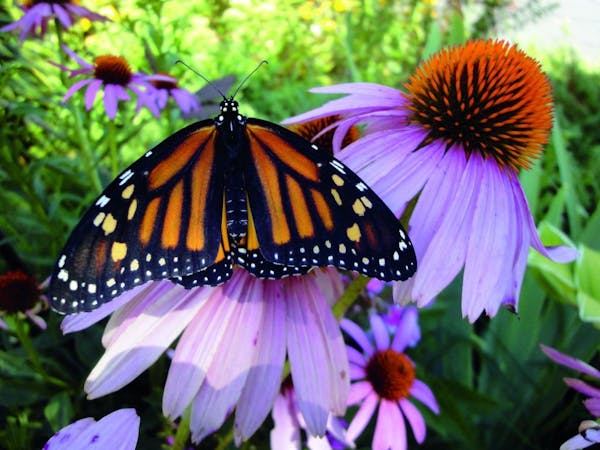Native plants have been taking center stage at botanical gardens and garden centers recently. But different people have different opinions about what makes a plant native.
Purists insist that only plants that lived in a particular region prior to European settlers arriving are true native plants, said Scott Milburn, president of the Minnesota Native Plant Society. The distinction is important, according to Milburn, because plants native to a region tend to be able to tolerate climate conditions present in that region better than other plants. For example, prairie plants native to Minnesota tend to be able to handle late-season drought better than plants that aren't from this region.
The Minnesota Department of Natural Resources (DNR) is a little more lenient, focusing on state boundaries rather than natural regions. Minnesota law defines a native species as "an animal or plant species naturally present and reproducing within this state or that naturally expands from its historic range into this state."
True native plant communities are defined by the DNR as "a group of native plants that interact with each other and with their environment in ways not greatly altered by modern human activity or by introduced organisms."
But activities such as farming, landscaping and logging have drastically changed the environment of the United States over time. As unaltered spaces disappear, some say we need a wide range of plants that can handle changing environments — and a broader definition of "native."
Even if you love natives, they may not be the perfect solution in every garden. The belief that native plants are necessarily better adapted for a particular region than exotics isn't always true. If natives were always better adapted, then we wouldn't have invasive species that take over a region, as buckthorn has done.
Another myth is that all exotics are invasive. There are many exotics, such as Japanese maples and most crops, that are well-behaved and stay right where they're placed.
The key to a healthy landscape is a diverse mix of plant materials that attract a wide variety of butterflies, birds and other wildlife with diverse diets.
Plant your garden using a mix of plant materials so that, if a particularly nasty pest comes to visit, it will eat only a few of your plants, and not your whole landscape. Native plants deserve to be a big part of this mix.
Jeff Gillman, associate professor of horticulture at the University of Minnesota, is the author of several gardening books.
In heated western Minn. GOP congressional primary, outsiders challenging incumbent

Minnesota Sports Hall of Fame: A class-by-class list of all members

This retired journalist changed professional wrestling from Mankato

